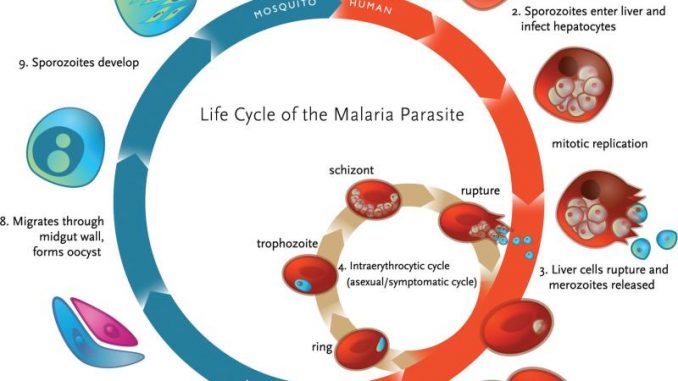
Plasmodium; a malarial parasite: characteristics and classification
- Plasmodium, the parasite responsible for human malaria is among the most researched genera of parasite in the world. Malarial infection in humans continues to grow in tropic and sub-tropic areas despite extensive studies on control measures.
Characteristics of Plasmodium
- They characteristically show the presence of apical complex.
- **Apical complex consists of polar rings, rhoptries, micronemes, mitcochondrions, microtubules and microspores
- Organs for locomotion
- They show slight amoeboid change of form
- The parasite in their life cycle shows an alternation of generation accompanied by an alternation of host
- Asexual cycle (Schizogony) takes place in erythrocytes in human host, sexual cycle (Sporogony) takes place in mosquito
- Typically, pigment is produced in erythrocyte during developmental stages of parasite. These pigments are visualized by light microscopy.
- Development of microgametes and macrogametes take place independently
- Each microgamont produces 8 microgametes on exflagellation.
- Sporozoites are naked with three layered wall
Classification of Plasmodium
Phylum: Apicomplexa
Class: Aconoidasida
Order: Haemosporida
Family: Plasmodiidae
Genus: Plasmodium
- The genus Plasmodium has been sub divided into 9 sub genera, of which three are found in mammals, four in birds and two in reptiles.
- Subgenus Plasmodium and Laverania causes malaria in human.
- Plasmodium vivax, P. malariae and ovale belongs to subgenus Plasmodium whereas Plasmodium falciparum belongs to subgenus Laverania.
